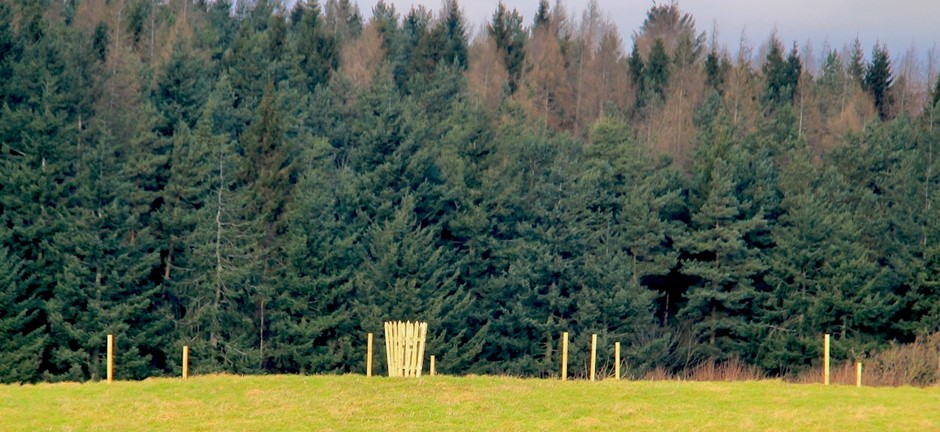
Our new project for 2019 - a stand of Scots Pine trees.
It has been in our mind for sometime to plant some Scots pine trees in our top field. It is one of the highest points on the farm at 326 feet.
The Scots Pine is a fabulous tree. Latin 'Pinus sylvestris'.
Scots pine is an evergreen conifer native to northern Europe, and is one of just three conifers native to the UK. (To find out more about this tree scroll down).
We had a family competition to come up with a plan for the layout of the trees and our Science teacher friend Ben came up with a perfect solution for 10 trees - a diamond within a hexagon. So from now on it will be 'Ben's Brake' meaning a stand of trees.
We are building the tree guards and have purchased the trees. The first one has already been planted and is clearly visible in the surrounding countryside.
We are offering the opportunity to dedicate one of the 10 trees to loved ones so please get in touch if you are interested. The trees are free but the tree guards are the cost at £97 each. They are to help the tree grow strong and straight and to stop deer eating it before it is strong enough to survive on its own. We are hoping that should take about 5 years. They will be planted by the footpath that goes to the Blackburn, and will be visible from the bottom road to and from Rothbury.
Scots Pine:
Mature trees grow up to 35m and can live for up to 700 years. The bark is a scaly orange-brown, which develops plates and fissures with age.
Twigs are green-brown and hairless. The needle-like leaves are blue-green and slightly twisted, and grow in pairs on short side shoots. After pollination by wind, the female flowers turn green and develop into cones. They mature the following season, so there are always cones of different ages on the one tree.
Mature cones are grey-brown with a raised, circular bump at the centre of each. Scots pine is monoecious, meaning both male and female flowers grow on the same tree. Male flowers comprise clusters of yellow anthers at the base of shoots. Female flowers are small, red-purple and globular, and grow at the tips of new shoots.
Find Out More About Cragend
Cragend Farm has a interesting and diverse history, from technical innovations to historic buildings. Tied in closely to the neighbouring Cragside Estate home of Victorian inventor and industrialist Lord Armstrong.
Wonderful Dog Friendly B&B and self catering cottage, Amazing unique historic site, (featured on TV: Matt Baker’s Travels with Mum & Dad North East)
Original Cragside Architecture and Machinery. Celtic Camp and Ducal Border Reiver settlement, remodelled by Victorian Lord Armstrong of Cragside as his show case for hydraulic machinery.
ACCESSIBILITY STATEMENT in ABOUT US.




